The football temple
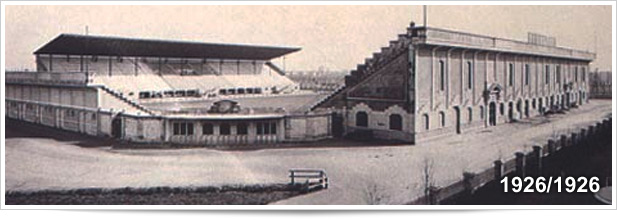
9th September 1926. The AC Milan stadium is ready. The president Piero Pirelli wonders about who he should invite to inaugurate it. The old opponents of the U.S. Milanese, which was so cherished by the fascist regime, lose results and they are incapable to assure a big call for that giant of 35thousand viewers, neither can Enotria nor Ausonia. No way, he has to invite those people, the outsiders, those who left the Milan team because they wanted to play with a lot of foreigners (… even in that time).
The managers of the Internazionale accept the invitation, sniggering. And doing so they ruin the Milan team’s party, as often happens: it ends 6-3 for the team driven by Luigi Cavenini, known as Zizì because he is annoying like a mosquito, which name is Zanzara in Italian (after scoring a goal he used to mock the goalkeeper and if the opponents were weak he sat on the ball with a disgusted expression, while he exhorted the referee to close the game: “Se po minga giugà insci”, a Milanese dialectal expression to say “we can’t play this way”).
Next day, trying to be forgiven, the Nerazzurri (the Black and Blue) mingle with the Rossoneri (the Red and Blacks) for a friendly international with a team from Prague, the Deutscher F.C.: together they win 4-1. However, the AC Milan stadium will be the battle field for the Inter players’ scoffs: in the year 1947 they too will come to play here, whereas they leave the Arena and will be able to have it renamed with the name of a player that is more on the Inter side than that of Milan, namely Giuseppe Meazza; some years later even the square in the middle of which it is located will be named after its presidentissimo (senior manager) Angelo Moratti. Meanwhile, paradoxically, starting from the Nineties Pirelli name stands out on t-shirts and Nerazzurri basketball hats, and on giant posters with a hairless boy alongside with authoritative words: “la potenza è nulla senza controllo”, meaning “power is nothing without control”.
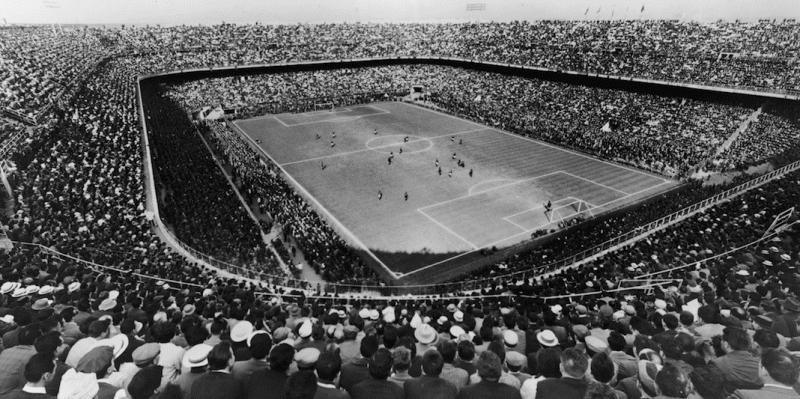
22th November 1966. “Milan gets much rogna, a Lombard expression meaning rotten luck. I am convinced that the neutral supporters sincerely deplored the team lost the derby. On the contrary, the critical remarks on Inter inspire optimism: it’s hard that it will play worse than now. If the Milan team had scored three times during the first round, no one would have been offended. But the derby avoids every common parameter. When you think of a derby you can never speak overall of it. Whoever watch it without unconditioned love is disgusted most of the time. However, it leaves deep marks on its protagonists and it always moves the season, or nearly always”.
A case in point being Gianni Brera playing a match concluded with an own goal of the Milan player Maddé, which marked deeply a viewer, Gino Santercole. This led him to write one of the first songs about football in the history of the Italian song, which was played by Adriano Celentano: it was published in the spring of 1967, and the names of two football teams appear for the first time. “How is it that you don’t remember? We were one-hundred-thousand at the stadium that day: I was an Inter fan, you a Milan supporter. From one side to the other I smiled to you and you said yes!”. As a matter of fact, with the new terrace seats connected to the galleries the seats are now 100thousand. Afterward they’ll be reduced to 86thousand for safety reasons.
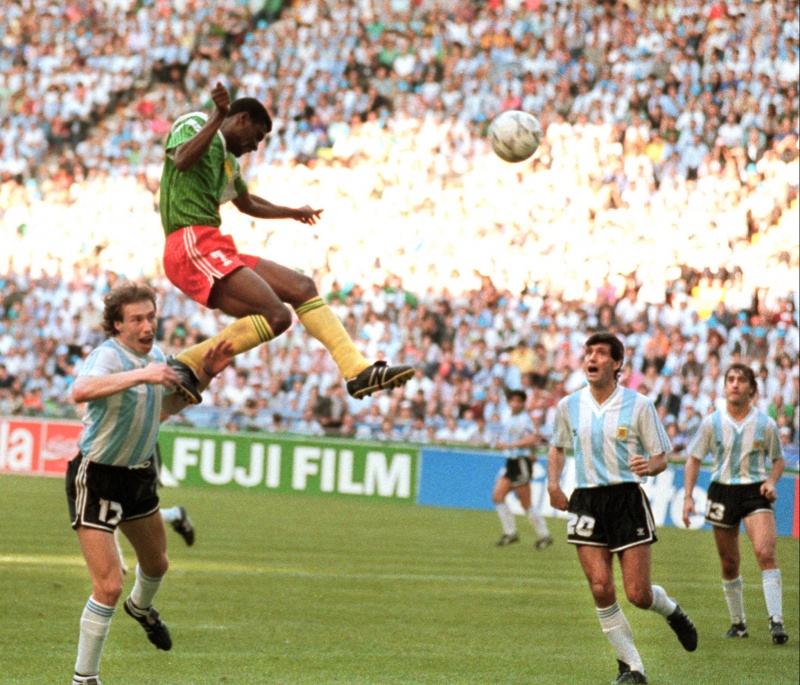
8th June 1990. François Omam Biyick leaves from the ground and takes off. His team, Cameroon, is made of 10 men against the leading champions of the world; against Maradona and Caniggia, Burruchaga and Abel Balbo. Omam Biyick (he is still up there. Can you see him?) plays in the French Serie B, with Laval. His brother Kana was expelled a short time before, and another one of the “untameable lions” in green is going to follow him in the locker room shortly after. But now it’s not important: the important thing is that now Omam Biyick hit the ball with his head. Slowly, the ball goes in the door. San Siro blows up. The stadium which unanimous whistled the Divine Diego, Inter and Milan Great Opponent in those years (… of course, nothing compared with the whistles for the new display panel, when it imprudently focused on Andreotti, Cossiga and Craxi in the gallery), trembles as rarely happened for the victories of one of the two Milaneses: those Champions nights in which Bruno Pizzul used to say “San Siro è una bolllgia!!!», namely San Siro is a madhouse.
The opening match of Italy Championship 1990/91 is seen all over the world, even nowadays, as one of the amazing surprises in the Championship history: Cameroon, already weaker (as a matter of fact Argentina will get to the final three weeks later) ends 9 against 11, but it wins. In its history Meazza Stadium housed three Champions League final matches, and they will become four soon. But you can trust me, very few times it roared as for the “untameable lions”.
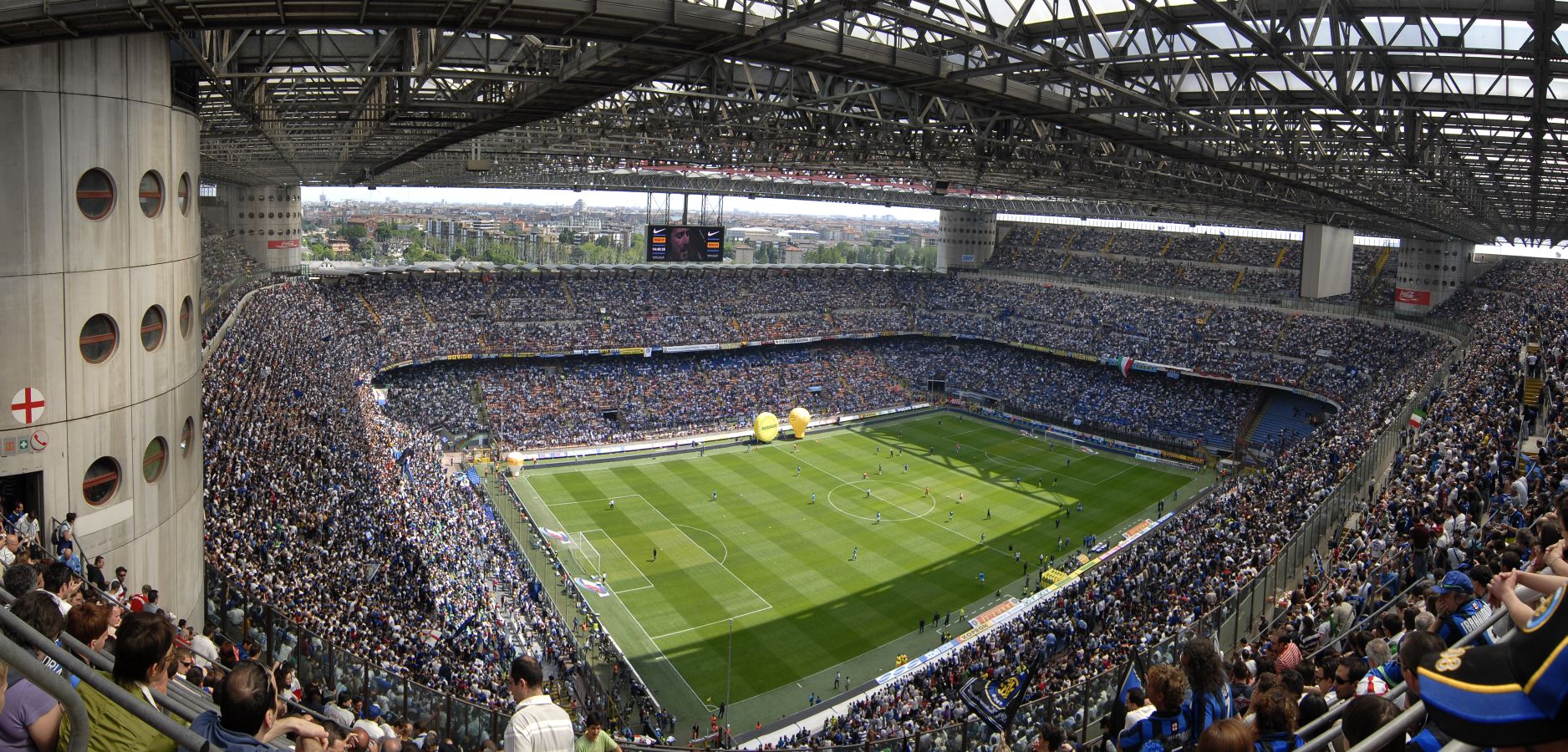
9th August 1990. “When you see Giuseppe Meazza Stadium (this is the correct name) it’s hard not to be left out of breath. When it is illuminated it seems a spaceship landed in a residential area. It could face the Death Star and it would win. Yes, is that impressive”.
For this reason Tony Evans, of “The Times”, comments on the presence of the Milanese temple in a rank made by football players and journalists: what the British people call “The San Siro” appears to be the second beautiful stadium in the world (the No. 1, to be fair, would be the Westfalenstadion of Borussia Dartmond). On the other side, the experts of FourFourTwo are a bit more severe: in their opinion in the world there are until 4 most wonderful stadiums. However, Andy Murray in his article explains that “in Milan there are two ancient splendours. One is the art masterpiece most studied in the world, a triumph of perspective evolving constantly since the beginning of its preparation, on a wall in the church of Santa Maria delle Grazie, more than 500 years ago. The other being a stadium. Are we really putting on the same level The Last Supper of Leonardo and San Siro? Yes, we are. If you are gone there, you know why.
The music stadium
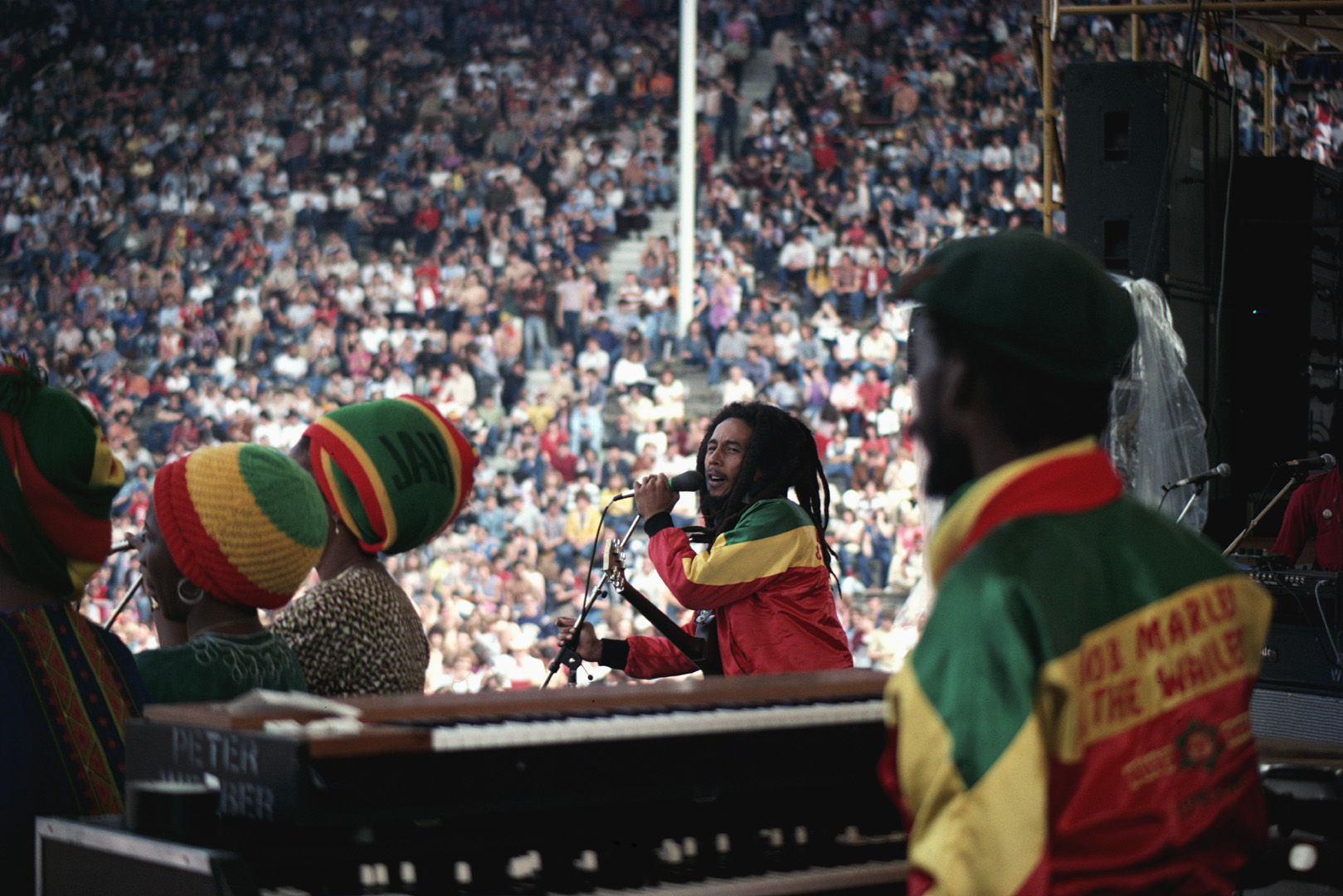
27th June 1980. Robert Nesta Marley gets on stage and inaugurates the other story of San Siro with the words “there’s a natural mystic blowing through the air”. He is already sick and he will die less than a year later. But Natural Mystic, through which he opens his legendary concert, catch an aspect of the stadium of Milan that had been eluded until then. There were already been concerts in other Italian stadiums: in 1977 Celentano in Cesena, in 1979 Patty Smith in Florence and Bologna, Dalla and De Gregori in Genoa, Turin and Bologna, the Pooh in Naples. But Marley, which in that time has the charisma of a prophet, fills up the Football Stair as it wasn’t able to do at the time of the 1980 European bankrupt: people’s disgust for the football betting blown up in March. Italy-Spain (which was played only 15 days earlier) had brought to San Siro 46thousand viewers, awarding them with a 0-0 score. Holland world runner-up and Czechoslovakia leading champion of Europe had played in front of only 11thousand people. It wasn’t football what people wanted, it was music: in around one month Angelo Branduardi and Edoardo Bennato also took the stadium. But San Siro strengthens its status as best Italian arena of rock during the middle of the Eighties, thanks to another man.
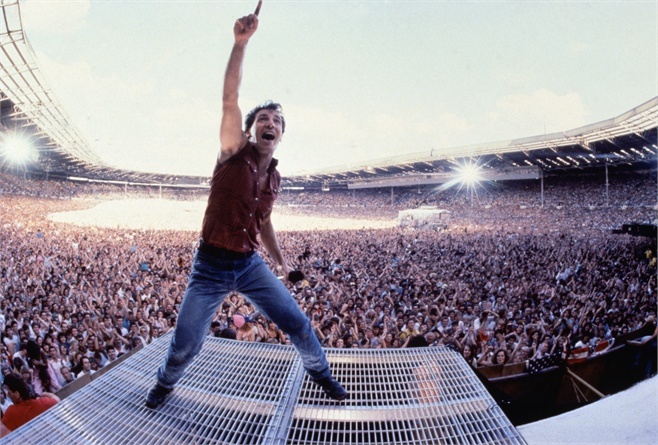
21th June 1985. “Born down in a dead men’s town, the first kick I took was when I hit the ground”. Just a second later, so as to confirm its desire for Regan hedonism, Milan answers: “Born in the USA!!!”. Bruce Springsteen also chooses Milan’s stadium for his debut in Italy: the Boss himself quotes this performance as one of the bests of his career. From that moment on a concert at Meazza stadium becomes a noble title but also an endeavour. If you don’t sold out the tickets at Olimpico or at San Paolo you can survive, but you can’t defy the Saint with impunity: if empty seats are left it’s a letdown that media and people who are passionate about music would wickedly throw back in your face. In just about few years, Claudio Baglioni (1985 and 86’) Genesis, Duran Duran, David Bowie (1987) also comes to be consecrated. Not everyone goes well. Taking advantage of the works for the Italy Championship 1990, the facility observes a pause. It seems like it was waiting for a new master.
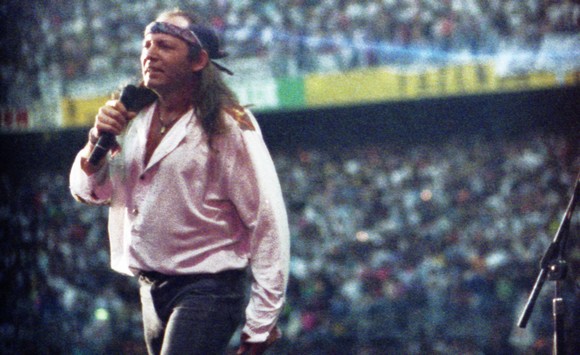
10th July 1990. “Guardami, credi che sia tutta rose e fiori questa vita mia?”. During the Eighties Vasco Rossi has been in San Remo twice, arrested twice, he made countless messes dealing with his promoters (and audience), he had drug and nerves problems, he argued with his historic producer and with his lieutenants as well: the guitarists Massimo Riva and Maurizio Solieri. When he gets on stage, before to start playing Muoviti, he is a potential calamity. When he gets off he is the first Italian rock star.
“Playing for me was a forbidden dream”, he said later on. Forbidden? In the Meazza’s hall of fame there are Michael Jackson (1997), Ligabue (1997 and many other times), Rolling Stones (2003 and 2006), U2 (2005 and 2009), Madonna (2009), Depeche Mode (2009 and 2013), Jovanotti (2013). But whether you like it or not the man of Zocca, after beyond than twenty concerts, in such custom that it seems impossible to have an end, there is not the shadow of a doubt about who is the King of San Siro.
4th July 1994. Al Bano and Romina Power make a show in front of 40thousand people. This is it guys, for sure. The stadium is not completely full, but 40thousand people… get rid of it!
Starting from the Nineties, not all concerts are intended to fill up the stadium: sometimes the stage is arranged in a way that it faces only a side of the bleachers. But it is crystal clear that the Italian pair most loved abroad takes part of the number of those artists that nobody would think they are able to play for large masses. On the contrary, they try to win their personal challenge, mobilizing their fans precisely through the San Siro factor: it’s clear that a concert held in it will be an historic event, a very different apotheosis from that of ordinary concerts. But speaking of glorifications.
2th June 2007. It rains in an amazing way, like it rained in Woodstock in 1969 and like it rains in Glastonbury every year, or almost that. After more than one hour the singer, soaked, addresses the 70thousand viewers: “I’m proud to represent my Italian colleagues, who’ll come on this stage. Because this night I’m the first, but I’ll not be the last. This concert is dedicated to my grandmother, to my friend Antonella and to those women who have very big balls”, Laura Pausini says to the crowd in ecstasies, while she stretches widely her hands and fingers. For the first time a woman takes San Siro, and she is Italian. The concert is a mega-production that required one month of work, a general test in Grado, the labour of 700 people, 23 trucks and an helicopter for the air shots. Something like that was already happened two years before.
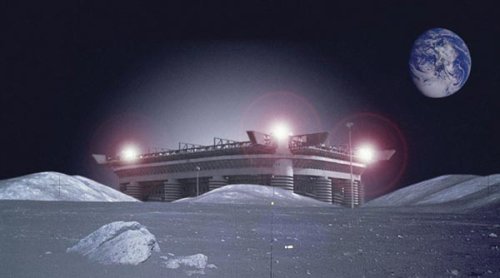
14th April 2005. Circular, a total event started at 6 in the afternoon which lasted until 6 in the morning the day after. For the first time since its existence it becomes home to artists, musicians, acrobats and even magicians – and this is not a joke. Something never seen before, and so even risking the shopping list effect it’s the case to remember who participated, everyone in a different way: Pietro Pirelli/Agon, Matthew Barney, Elisabetta Benassi, Carlos Casas, Cao Fei, Giuseppe Ielasi, Natalie Djurberg, Jimmie Durham, Yona Friedman, Alejandro Jodorowsky, Kinkaleri, Ogino Knauss, Thomas Köner, Arto Lindsday, Armin Linke, Marcello Maloberti, Pedro Reyes, Luca Vitone and so many others, as it is said. But the thing is that time was for real.
In a few days, soon after the Champions League final, Laura Pausini will be back in San Siro, the 4th and the 5th of June. After her will be the time of two Italian groups (something that during the 80th and the 90th never happened: the first national rocker band at Meazza were the Negramaro in 2008). Milan’s temple will celebrate the Pooh farewell, then their probable heirs, the Modà (even if not for 50 years, perhaps). So, in July, after two concerts of Bruce Springsteen, there will be a big deployment of “divas” with Rihanna (on the 13th) and Beyoncé (on the 18th). And in September let’s hope that some “divas” in Nerazzuro or Rossonero decide to stay tuned and take San Siro like it was in the past. It’s about time!
https://www.youtube.com/watch?v=jPDMUTQtu_I







